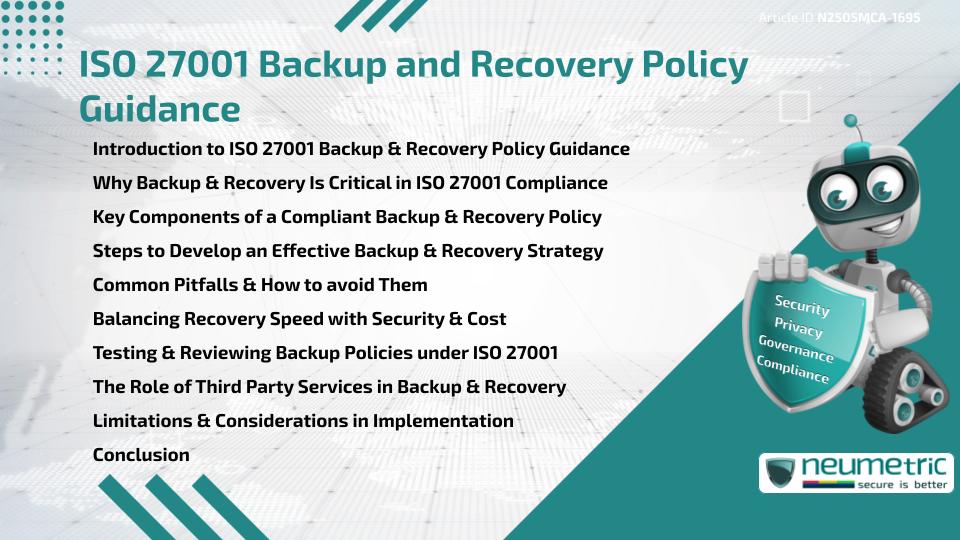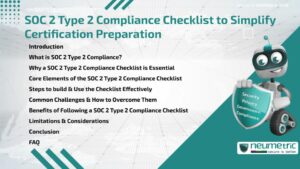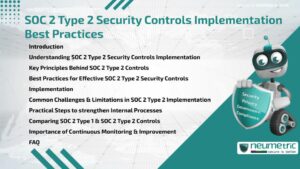Table of Contents
ToggleIntroduction to ISO 27001 Backup and Recovery Policy Guidance
In today’s fast-paced digital world, ensuring Business Continuity means having a reliable Plan for Data Backup & Recovery. As part of the Information Security Management System [ISMS], the ISO 27001 backup and recovery policy guidance plays a vital role in protecting organizational data from loss, corruption or breaches. This article breaks down the essentials, explores practical steps & offers a grounded understanding of how businesses can align with ISO 27001 requirements while keeping data safe & accessible.
Why Backup & Recovery Is Critical in ISO 27001 Compliance
Backup & recovery fall under Annex A.8.13 of the ISO 27001 standard, which focuses on safeguarding Data Availability & Integrity. Without proper Backup Controls, even the strongest Cybersecurity measures can fail during a Ransomware Attack, System Crash or Accidental deletion.
Think of backup & recovery like a fire extinguisher—often ignored until disaster strikes. By following ISO 27001 backup and recovery policy guidance, Organisations create a safety net that ensures operations can resume quickly with minimal damage.
Key Components of a Compliant Backup & Recovery Policy
A robust policy based on ISO 27001 backup and recovery policy guidance should cover:
- Scope & Objectives: Define what Systems & Data are covered.
- Backup Frequency: Daily, weekly or as needed for Business Operations.
- Storage Media & Locations: Local drives, offsite Servers or Cloud.
- Access Controls: Who can create, manage or restore backups?
- Data Retention Periods: Keep backups for an appropriate timeframe.
- Encryption & Integrity Checks: Protect & validate backed-up data.
These components help build a policy that meets Audit requirements while serving practical business needs.
Refer to the National Cyber Security Centre’s backup guidance for real-world alignment tips.
Steps to Develop an Effective Backup & Recovery Strategy
Following ISO 27001 backup and recovery policy guidance doesn’t need to be overwhelming. Here’s a simplified approach:
- Conduct a Risk Assessment: Identify what data is critical.
- Classify Data: Rank by sensitivity & importance.
- Select Backup Methods: Full, differential or incremental.
- Define Recovery Objectives: Set Recovery Time Objective [RTO] and Recovery Point Objective [RPO].
- Assign Roles: Clarify who manages backup tasks.
- Document Everything: Ensure clear, auditable Policies.
Each step ensures alignment with ISO standards while maintaining business relevance.
Common Pitfalls & How to avoid Them
Despite clear ISO 27001 backup and recovery policy guidance, many Organisations make errors such as:
- Relying on single-location backups that are vulnerable to physical Threats
- Infrequent testing of recovery procedures
- Ignoring Cloud misconfigurations leading to data exposure
- Storing backup credentials in unsecured formats
Avoiding these mistakes starts with awareness & regular internal reviews. Avoiding blind trust in automation & Cloud vendors also helps maintain accountability.
Balancing Recovery Speed with Security & Cost
Faster recovery often requires more resources—faster storage, additional software & staff availability. However, ISO 27001 backup and recovery policy guidance emphasizes balance.
Use this analogy: having an ambulance on standby for every office is overkill, but having no emergency Plan is reckless. A middle ground—like regional support or Cloud-based Disaster Recovery—often serves best.
For example, Amazon Web Services’ whitepaper outlines How to manage cost while reducing downtime effectively.
Testing & Reviewing Backup Policies under ISO 27001
Policy reviews ensure the system adapts to business changes. According to ISO 27001 backup and recovery policy guidance, periodic testing of
Recovery Plans are mandatory. This includes:
- Tabletop simulations
- Full recovery drills
- Random data integrity checks
These tests uncover hidden flaws & prepare teams for real-world scenarios.
The Role of Third Party Services in Backup & Recovery
Many businesses rely on Managed Service Providers [MSPs] or Cloud vendors for data storage. While convenient, this introduces new Risks & responsibilities.
Under ISO 27001 backup and recovery policy guidance, businesses must:
- Review service agreements carefully
- Ensure third parties follow ISO 27001 or equivalent frameworks
- Define clear escalation paths & response timelines
Outsourcing does not remove responsibility—it simply redistributes it.
Limitations & Considerations in Implementation
While ISO 27001 backup and recovery policy guidance is flexible, there are limits:
- It does not prescribe exact tools or technologies
- Guidance requires customization to suit business size, sector & Risk tolerance
- Some legacy systems may not support modern encryption or automation
Conclusion
Creating & following a robust backup & recovery policy is essential for meeting the expectations of the ISO 27001 backup and recovery policy guidance. In today’s digital environment, where data Threats are constant, an Organisation’s ability to respond quickly & restore operations depends on how well these Policies are Planned & executed. From setting clear roles to defining retention timelines & recovery testing procedures, each component plays a critical part in achieving data resilience & Regulatory Compliance.
While the guidance offers a strong foundation, practical implementation depends on adapting it to fit your Organisation’s size, complexity & Risk landscape. Organisations must also balance security with usability—ensuring that data is protected, yet readily recoverable without creating operational bottlenecks.
By aligning your backup & recovery practices with ISO 27001 expectations, you don’t just check a Compliance box—you create an environment where data loss becomes a recoverable event instead of a disaster.
Takeaways
- ISO 27001 backup and recovery policy guidance ensures data availability, integrity & resilience.
- A clear strategy includes Risk Assessment, data classification & defined recovery goals.
- Periodic testing & internal reviews improve real-world readiness.
- Balancing cost, speed & security leads to long-term success.
FAQ
What is the purpose of ISO 27001 backup and recovery policy guidance?
It helps Organisations secure data, ensure Business Continuity & meet Compliance by setting clear rules for backups & recovery.
How often should backups be tested under ISO 27001?
Testing should occur at Planned intervals, typically annually or after major system changes, to ensure the Recovery Plan actually works.
Can Cloud-based Organisations comply with ISO 27001 backup & recovery requirements?
Yes, if they meet ISO 27001 standards & provide proper Encryption, Access Control & Recovery Support.
Is outsourcing backup & recovery allowed under ISO 27001?
Yes, but the Organisation remains responsible for ensuring Third Party Compliance with ISO 27001 backup and recovery policy guidance.
What should be included in a backup policy to meet ISO 27001?
It should define scope, frequency, storage methods, roles, encryption standards & testing procedures.
What is the difference between RTO & RPO?
RTO is how quickly systems must be restored. RPO is how much data loss is acceptable, measured in time.
Why is encryption important in ISO 27001 backup strategies?
Encryption protects backup data from unauthorized access, especially when stored offsite or in the Cloud.
Are manual backups compliant with ISO 27001?
They can be, but they must be consistently applied, documented & secure to align with ISO 27001 backup and recovery policy guidance.
Do ISO 27001 audits check backup procedures?
Yes, auditors review backup documentation, test logs & Access Control to ensure Compliance with ISO 27001 backup and recovery policy guidance.
References
Need help?
Neumetric provides organisations the necessary help to achieve their Cybersecurity, Compliance, Governance, Privacy, Certifications & Pentesting goals.
Organisations & Businesses, specifically those which provide SaaS & AI Solutions, usually need a Cybersecurity Partner for meeting & maintaining the ongoing Security & Privacy needs & requirements of their Clients & Customers.
SOC 2, ISO 27001, ISO 42001, NIST, HIPAA, HECVAT, EU GDPR are some of the Frameworks that are served by Fusion – a centralised, automated, AI-enabled SaaS Solution created & managed by Neumetric.
Reach out to us!





